VisualSearch for HS Classification:
See the image, secure the code. Access one million authenticated global Customs classifications by visual query. Leverage a million precedents to classify speedily and with unmatched precision.
It’s a strategic leap in your operations, establishing you as the definitive, trusted expert.
Even if you can quickly and accurately classify HS codes through visual search based on the content below, you’re still just an administrative procedure professional. By applying this HS classification knowledge, you can become a talent who provides advanced advice to clients, expertly applying FTA Rules of Origin to their goods to achieve significant tariff reductions. By understanding FTAs and examining non-public documents that reveal how tariffs are actually reduced in real-world FTA scenarios, you’ll be able to substantially lower your clients’ substantial customs duties.
If you succeed in a million-dollar tariff reduction, how much compensation could you earn? Don’t remain an administrative procedure professional without this ambition. Let’s aim to become the ultimate customs professional together!
On this page, you’ll first discover techniques to quickly and accurately perform HS classification using images. Then, I’ll show you how to access foundational FTA knowledge and thousands of real-world FTA application examples.
If you’re new to customs, you’ll quickly become a true professional. And if you’re already a professional, you’ll be able to significantly amplify your clients’ profits with advanced knowledge. Be sure to read to the end!
Taichi Kawazoe
Visual Search makes HSclassification far more effective
HS classification is a very difficult technique, but did you know there’s a way to perform HS classification accurately and speedily by searching past classification examples by actual customs from images? The image below is just one example..

A picture is worth a thousand words.
Utilizing this method, you can identify the HS code by employing VisualSearch across various World Customs ruling databases.
– Taichi Kawazoe / HS classification Tariff Engineer
Imagine how visual search enables quick and accurate HS classification by referring to the search screen below.
Search results for “Cat tree”
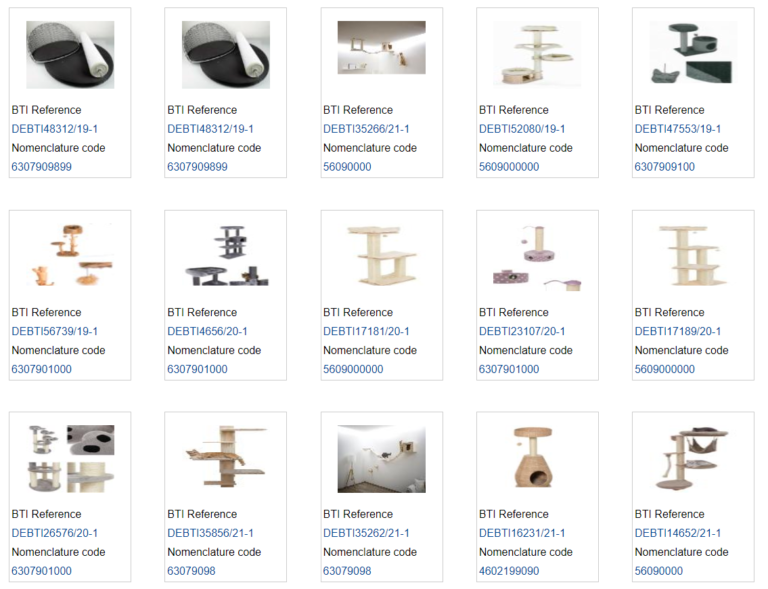
Search results for “Carpets”

Search results for “Christmas goods”
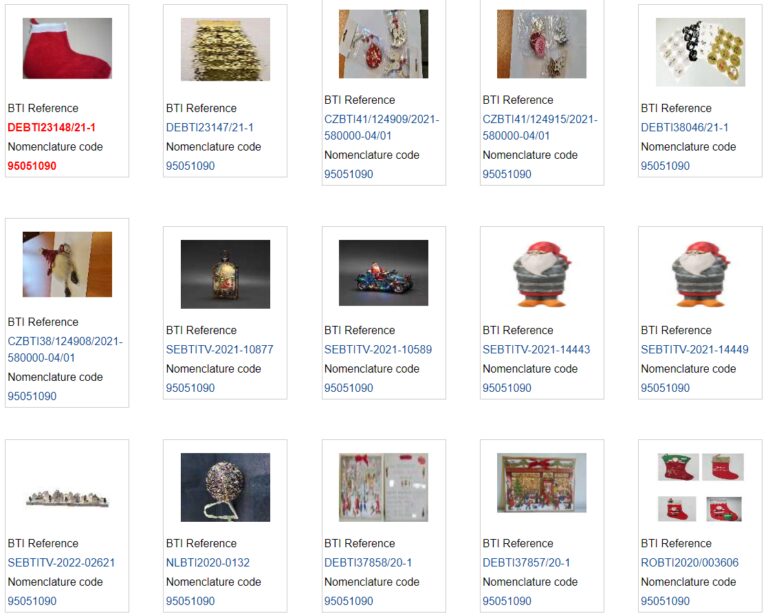
Search results for “Metal furniture”
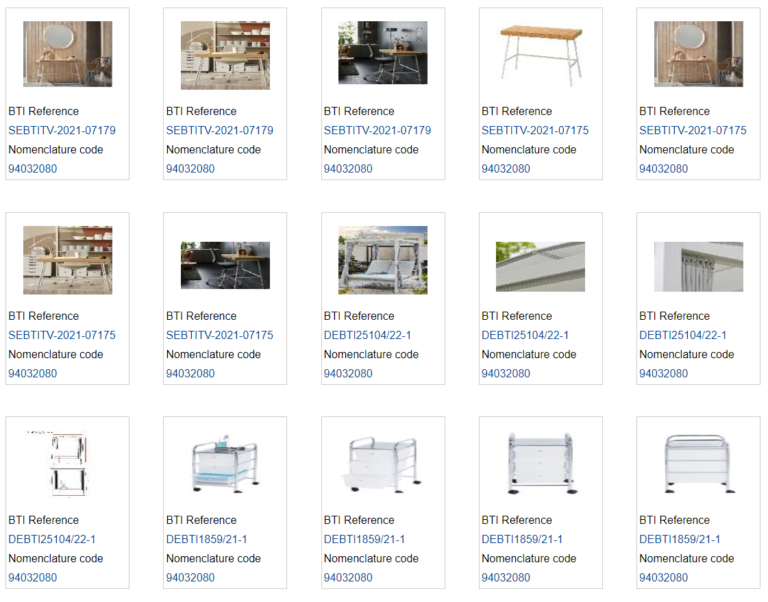
Search results for “Smart Watch”
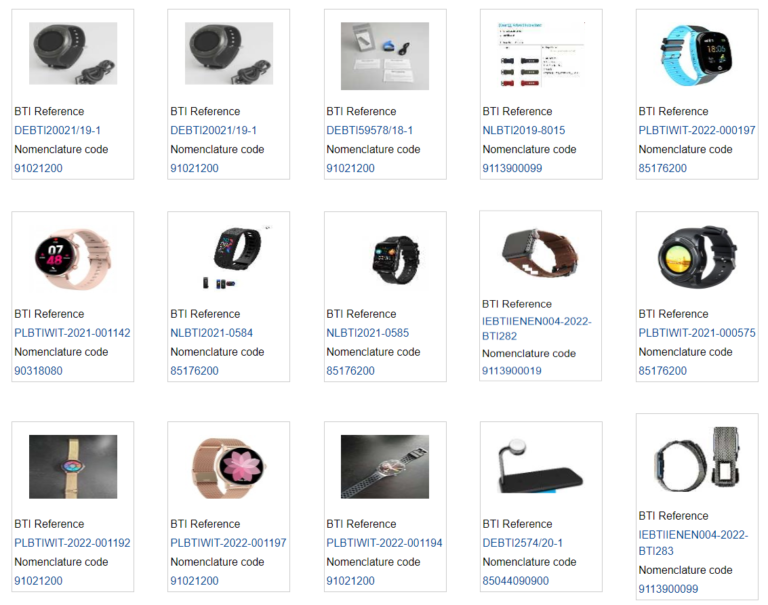
Movie

How does it work?
HS classification is a skill that requires extensive research and a significant investment of time. It’s a time-consuming process, and accurate classification demands years of experience and knowledge. However, with visual search technology, you can now search for the desired HS classification using images, allowing for extremely quick and accurate results.
So, where do these images and classification justifications come from?
They are the results of searches within databases of actual HS classification cases, in which customs authorities have classified goods based on requests from trade companies. These are known as customs rulings, issued by customs authorities around the world.
The following are the countries covered by the customs ruling search:
- All European Union (EU) countries
- USA
- UK
- China
- Japan
- Taiwan
- Chile
- Australia
- Thailand
- Singapore
- Philippines
- Cambodia
- India
- Canada
- Bangladesh
- Switzerland
- Ukraine
- Turkey
- Brazil
The total number of customs rulings across all these databases exceeds one million.
Some rulings even support image-based searches, allowing you to significantly enhance your HS classification capabilities and achieve accurate classifications in a short amount of time.
By using the visual search method, you can search a large number of customs rulings issued by the countries listed above directly from your browser—just like browsing the internet—without the need to install any software.
Many records include images and comprehensive details, backed by authoritative decisions. Simply enter the keyword for the item you’re targeting and select a similar item’s record to ascertain the HS code.
This method enables you to efficiently find the correct HS code. Without it, would you resort to spending your entire day perusing the Tariff-related documents all day long?
About the author

Taichi Kawazoe
Author of Visualsearch for HS classification.
My article was introduced Customs Compliance & Risk Management issued by Lithuanian customs practitioners association (LCPA)
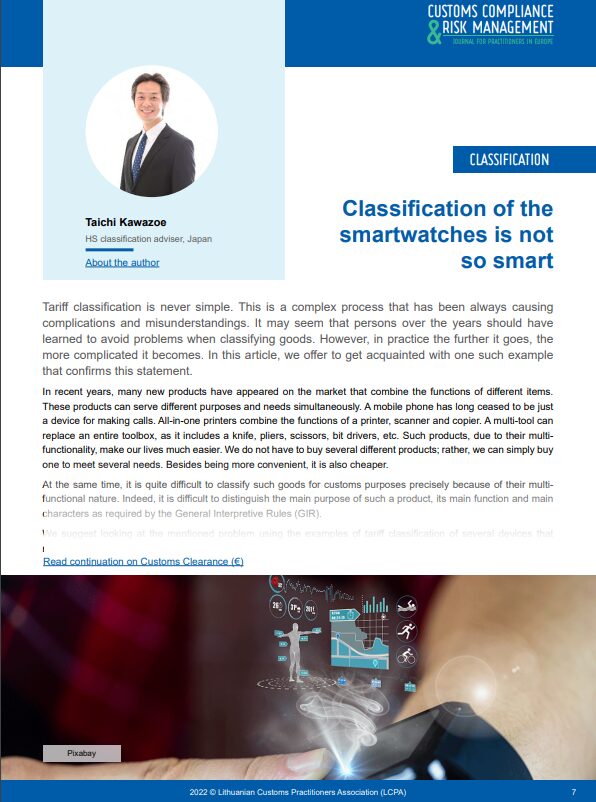
Insights from Other Customs Professionals
The Benefits of The book
The following are the advantages of mastering visual search for HS classification.
Benefit 1
You can determine HScode with ImageSearch on the one million world Customs ruling database.
Benefit 2
Avoid overpayment of duties due to classification dichotomy or misclassification.
Benefit 3
Make the most of the opportunity to benefit from free trade agreements to reduce tons of customs duties.
In this book you will learn…
The complexity of HS codes can easily lead to misclassification. Surveys indicate that approximately 30% of all declarations are misclassified. Misclassification or dichotomy in HS classification can have several repercussions:
Excessive payment of duties
Lost opportunities to benefit from Free Trade Agreements
Potential imposition of anti-dumping or countervailing duties Signals to customs of deeper issues,
potentially triggering audits Unanticipated delays in customs clearance
This book provides insights on how to circumvent these issues by accurately determining the appropriate HS codes, thereby streamlining trade procedures and maximizing the advantages of reduced customs duties through effective HS classification methods.
In this guide, you will discover:
1.Strategies for efficiently searching online for the correct HS code,
ensuring smooth customs clearances, avoiding delays, and preventing unnecessary inspections by customs authorities.
2.How to fully utilize Free Trade Agreements to significantly reduce customs duties,
which can lead to substantial profit increases in ongoing trading activities.
3.Methods to prevent the overpayment of duties caused by misclassification or classification dichotomy. This approach involves leveraging the World Customs
HS decision database to obtain reliable information for defining the
HS code of your target item.
The database offers access to item descriptions, images, and the assigned HS codes, searchable by item keywords.
This book is an essential resource for customs brokers, HS classifiers, trading companies, manufacturers, suppliers,
trading consultants, and anyone involved in trade.
It is also an invaluable guide for beginners just starting with HS classification, aiming to impart the knowledge gained from exploring Worldwide Customs decision databases.
Through this book, I aim to share my experiences and the expertise I’ve acquired in this field.
Will AI replace customs specialists?
Recently, AI has been evolving rapidly, and it is said that the majority of white-collar jobs will be replaced by AI. In the field of HS classification, AI is also making significant inroads, and some may feel anxious that AI classifiers will threaten the position of customs specialists.
However, AI can currently only handle simple HS classifications. For example, straightforward classifications like those for a toothbrush or a 3000cc gasoline car, or simple tasks where the HS classification is already determined and only requires copying and pasting, will likely be taken over by AI.
But in actual practice, the understanding of the various regulations necessary for HS classification can differ among individuals and countries. Therefore, it is virtually impossible for AI to perform perfect HS classifications that are universally agreed upon by all humankind.
In other words, no matter how much AI advances, it will ultimately be human experts who anticipate differences in rules and interpretations by others, perform the final confirmation, and make the declaration to customs. The scenario where HS codes determined by AI are directly declared to customs as-is will likely never materialize. AI can only ever be a copilot to human HS experts.
As someone with the specialized skill of HS classification, you have a bright vision for your future in business. You will use AI as a copilot, and your skill will be what makes the final judgment. This skill will be significantly enhanced by this visual search method.
Furthermore, your career is extremely valuable and highly prized. This will continue to be an enduring skill that allows you to grow significantly and lead the trade industry as an outstanding business professional.
Invest in this book and begin your journey to a successful career
The database consists of 45 countries Customs HS classification decisions containing 1,000,000 records.
Many records include images and comprehensive details, backed by authoritative decisions.
Simply enter the keyword for the item you’re targeting and select a similar item’s record to ascertain the HS code.
This method enables you to efficiently find the correct HS code.
Without it, would you resort to spending your entire day perusing the Tariff-related documents all day long?
The E-book format is a PDF file.
After the payment procedure, you will be able to read it immediately.
No software is required.
You can search for it by the internet browser.
No additional fee is required.
You can search for it for free.
The INVOICE will be automatically sent to the email address used at the time of purchase.
Rest assured that your purchase information will not be disclosed to any third party.
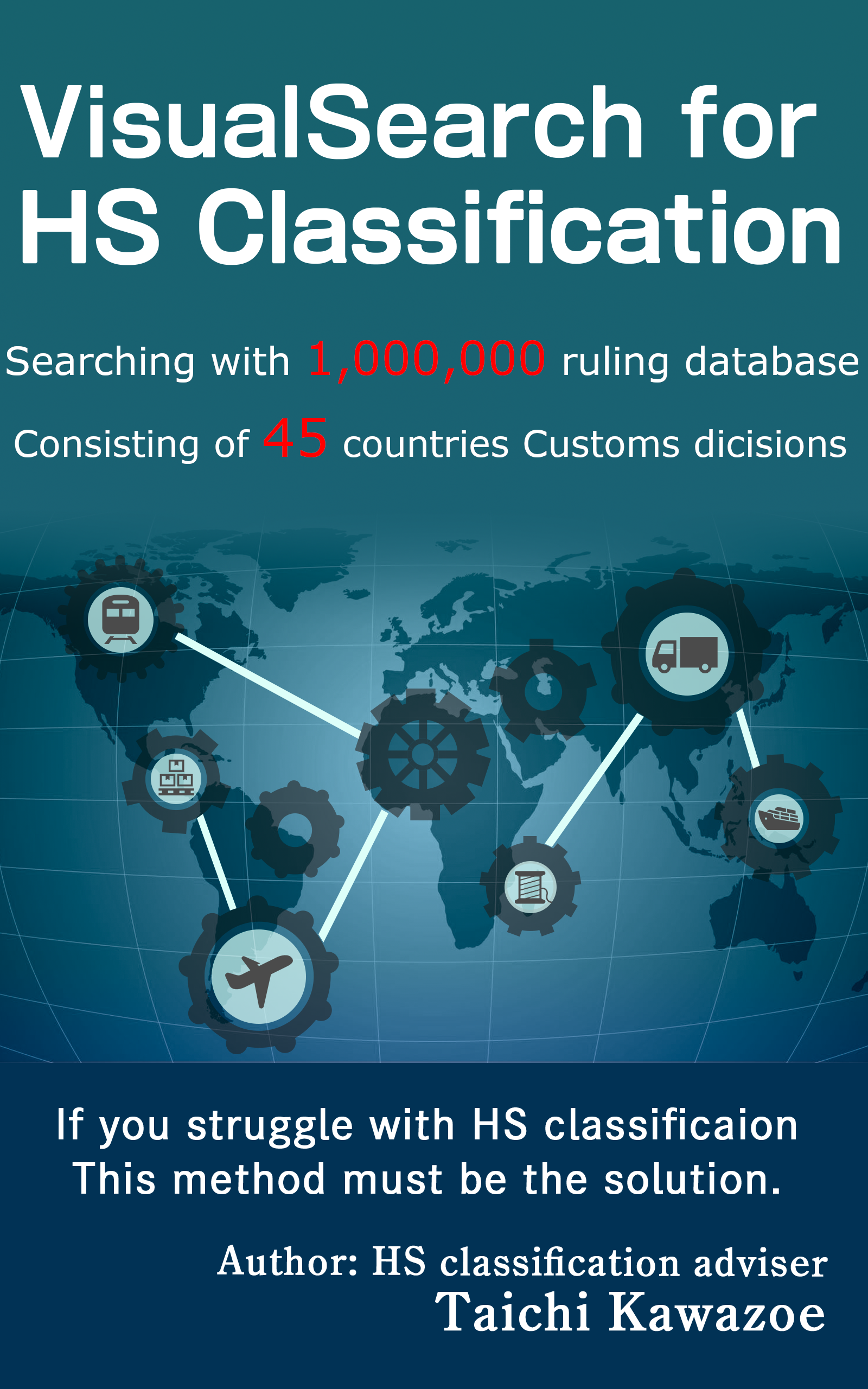
Exclusive Bonus for Book Buyers Part.1
We have prepared a special bonus gift exclusively for book purchasers.
It is a no-installation-required program called “Integrated ruling search” that allows you to translate HS classification-related keywords into multiple languages simultaneously. (This tool operates directly in your web browser, just like browsing the internet.)
Since many customs ruling websites around the world are written in their respective national languages, users often need to manually translate keywords when navigating different ruling databases. With our bonus tool, “INTEGRATED RULING SEARCH”, you can instantly access direct links to various countries’ customs ruling pages and copy translated keywords with a single click. These keywords can then be immediately pasted into each country’s search form.
This allows you to efficiently and accurately research classification cases from around the world in a short amount of time.

Here is an overview.
The following page is a system called BTI, which allows for a comprehensive search of Customs Rulings from all customs authorities in EU countries. Let’s try searching using the keyword “chocolate”. As a result, 78 entries were found.(The number of search results reflects the count at the time this article was written and may differ at present.)

Since EU countries use multiple languages, entering the word “chocolate” in English alone will yield only a few search results. Therefore, by translating the keyword “chocolate” into several languages used in the EU and connecting them in a row with “OR”, the following type of keyword string is formed.
Schokolade OR chocolade OR chocolate OR chocolat OR czekolada OR chocolate

As a result, 657 entries were found.
Performing this task manually would be incredibly time-consuming, but in this book, we introduce a method to automate the process using a program.
By translating a specific keyword into multiple languages, it becomes clear that the amount of information obtained increases significantly.
Although the information displayed in the search results will be in various languages, this is not a problem as browsers like Google Chrome can instantly translate them into the language you are using.
In addition to the languages of EU countries, this book also covers translations into Chinese, Taiwanese, Japanese, Turkish, Ukrainian, and Portuguese. The program can navigate to the Customs Rulings pages of various countries. Therefore, once a word is translated, you can collect Customs Ruling information from many countries based on that translated word, enabling quick and accurate HS classification.
This tool does not require any downloads and can be used directly from an internet browser, making it accessible even in companies where downloading unauthorized software is prohibited. (It uses Google Drive.) Additionally, this tool integrates with DeepL, a translation service, to support multilingual translations. As of now, integration with DeepL is completely free.

Exclusive Bonus for Book Buyers Part.2
So far, we’ve discussed the methods of HS classification. However, HS classification, while essential in trade transactions, has a largely procedural and passive nature—it focuses on ensuring accuracy in declarations to avoid mistakes. For customs specialists, HS classification is a core duty, but it doesn’t typically involve profit-maximizing activities (with the exception of certain specialized areas such as tariff engineering consultancy).
That’s why I’d like to propose the following: once you’ve mastered HS classification, take the next step by developing your skills in reducing tariffs through FTAs. By doing so, you can strategically guide your clients to significantly reduce the duties they would otherwise have to pay.
While proper HS classification alone can earn you a decent fee, imagine the value you could provide if you helped a client legally reduce millions of dollars in tariff obligations to zero using your knowledge, experience, and expertise. Just think—how much could you charge as a consultant in such a case? The potential upside is virtually limitless if you approach this strategically.
Unfortunately, comprehensive and easy-to-understand manuals on FTAs are rare. The few that do exist tend to be packed with difficult technical terms in small print, making them inaccessible to many professionals.
That’s why I’ve included, as a bonus, my original Visual FTA Comprehensive Manual—a fully illustrated, 286-page volume packed with diagrams, charts, and a glossary of terms to make learning intuitive and accessible.
This manual is designed to provide a systematic framework that enables you to respond quickly and effectively to any FTA situation around the world.
With it, you’ll be able to operate as a customs specialist who specializes in strategic tariff reduction using FTAs, ready to deliver immediate value.
So, ask yourself this: do you want to remain someone who simply handles administrative customs procedures endlessly?
Or would you rather become an outstanding consultant—an expert in combining HS classification with advanced, high-value skills—who helps clients reduce millions in duty payments and drives large-scale business success?
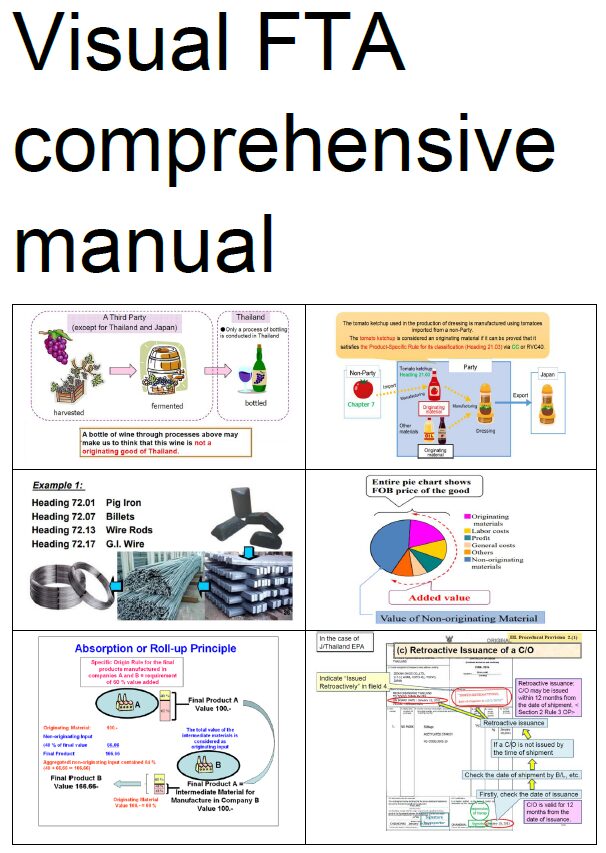





Visual FTA Comprehensive Manual: Table of Contents
Chapter 1: Introduction
- 1.1 Significance and Economic Impact of FTA Application for Tariff Reduction
- 1.2 Basic Content of FTAs and Global Trends
- 1.3 Basic Flow and Preparation for FTA Utilization
- 1.4 How to Use This Manual and Chapter Overview
Chapter 2: Basic Concepts of Rules of Origin
- 2.1 What Are Rules of Origin: Definition and Purpose
- 2.2 Importance of Rules of Origin and Their Impact on Business Strategy
- 2.3 Differences of Preferential and Non-Preferential Rules of Origin
- 2.4 Basic Structure of Rules of Origin
- 2.5 Calculation Method of Preferential Tariff Rate
Chapter 3: Types and Characteristics of FTAs
- 3.1 Access to each FTA text
- 3.2 Bilateral and Multilateral FTAs
- 3.3 Overview and Characteristics of Major FTAs (e.g., RCEP, CPTPP, Japan-EU EPA)
- 3.4 Comparison of Rules of Origin by FTA and Selection Points
- 3.5 Latest FTA Trends and Future Outlook
Chapter 4: Detailed Analysis of Origin Criteria
- 4.1 Wholly Obtained or Produced Goods (WO)
- 4.2 Produced Entirely (PE)
- 4.3 Substantial Transformation
- 4.3.1 Change in Tariff Classification (CTC): Understanding and Utilizing HS Codes
- 4.3.1.1 Change in Chapter (CC)
- 4.3.1.2 Change in Tariff Heading (CTH)
- 4.3.1.3 Change in Tariff Sub-Heading (CTSH)
- 4.3.2 Value Added / Ad Valorem Criterion: Calculation Methods and Management Points
- 4.3.3 Specific Manufacturing or Processing Operations: Industry-specific Application Examples
- 4.3.1 Change in Tariff Classification (CTC): Understanding and Utilizing HS Codes
- 4.4 Combination and Selection Methods of Origin Criteria
- 4.5 Interpretation and Application of Product-Specific Rules of Origin (PSR)
Chapter 5: Special Provisions of Rules of Origin and Their Utilization
- 5.1 Accumulation (Cumulation) Rules: Bilateral, Full, and Extended Cumulation
- 5.2 Bilateral, Diagonal/Regional, Full, and Extended Cumulation
- 5.3 Roll-up (Absorption) Principle / Intermediate Materials
- 5.4 Application and Calculation of De Minimis Rules
- 5.5 Minimal Operations: Criteria for Judgment
- 5.6 Rules for Accessories and Spare Parts
- 5.7 Sets
- 5.8 Indirect Materials / Neutral Elements
- 5.9 Handling of Packing Materials and Containers
Chapter 6: Consignment Criteria
- 6.1 Direct Transportation / Transshipment
- 6.2 Handling of Exhibition Goods
- 6.3 Principle of Territoriality
- 6.4 Exceptions to the Principle of Territoriality
Chapter 7: Origin Certification and Application Procedures
- 7.1 Types and Characteristics of Origin Certification (Third-party, Approved Exporter system, Self, Importer Certification)
- 7.2 Issuance Procedures and Points of Caution for Certificates of Origin
- 7.3 Utilization of Electronic Origin Certification Systems
- 7.4 Obligation and Management of Certificate Preservation
- 7.5 Creation and Use of Origin Declarations
Chapter 8: Documentary Examination on a Certificate of Origin (C/O)
- 8.1 Understanding the Certificate of Origin Form
- 8.2 Checking whether a C/O is issued properly or not
- 8.3 Matching imported cargoes with goods certified by a C/O
- 8.4 Checking whether the goods satisfy origin criteria or not
Chapter 9: Customs Verification and Risk Management
- 9.1 Purpose, Types, and Procedures of Verification
- 9.2 Actual questionnaire used during verification
- 9.3 Checkpoints to Prevent Judgment Errors in the Verification Process
- 9.4 Risks of Additional Tax Assessment and Countermeasures
- 9.5 Failure Cases in Applying Preferential Tariff Rates and How to Avoid Them
- 9.6 Responding to and Preparing for Post-clearance Audits
Appendix
(Appendix Materials)
Exclusive Bonus for Book Buyers Part.3
Customs advance rulings on FTA rules of origin are not publicly accessible, unlike HS rulings.
The origin determination records typically contain significant amounts of proprietary business information and are therefore not published online.
Hence, an actual case of a company applying for a ruling from customs is presented here.
Thus, the aim is to share information that does not infringe on business confidentiality but provides valuable insights for customs specialists.
The case presented here is NOT a demonstrative hypothetical scenario but “Genuine review information” from an actual trading company submitted to customs.
This information empowers customs specialists to achieve significant tariff reductions for their clients through FTAs.

The total number of cases fluctuates depending on the search date, but you can obtain a vast amount of FTA advance ruling information, approximately 5,000 cases.
When you access the data you’re interested in, a detail screen like the one below will appear. This screen provides detailed information, including the HS code of the final product, the applied FTA, the raw materials used and their HS codes, and a thorough description of the manufacturing process undertaken to obtain origin qualification.
By extensively reading through these numerous examples of FTA advance rulings, your career as an FTA duty reduction consultant will undoubtedly flourish.
In Exclusive Bonus for Book Buyers Part 3, we’ll guide you to a database that provides a wealth of generally undisclosed information from actual companies’ FTA advance rulings. This includes detailed insights into manufacturing processes, raw materials, and all relevant HS codes—essentially, every step taken to satisfy FTA rules of origin.
While this database isn’t in English, the effort of translation is well worth it. It goes far beyond a simple FTA manual, offering a deep dive into the practical intricacies of FTA usage. By studying these real-world examples, you’ll gain invaluable practical experience, setting you on the path to becoming a professional FTA duty reduction consultant.
We’re confident that with 4,000 to 5,000 case studies consistently available, you’ll have more than enough material to build extensive practical experience as an FTA duty reduction consultant.
What You’ll Learn from this book
“Visual Search” Makes HS Classification Far More Effective You’ll master an image-centric approach to HS classification. This section also covers the fundamentals of HS classification, including the General Rules for the Interpretation of the Harmonized System (GRI), making it suitable for beginners to learn HS classification from the ground up.
“Integrated Ruling Search” Gain access to a database of over a million advanced rulings (product-specific HS classification cases) from customs authorities worldwide. Searching through this vast collection of examples will significantly boost the speed and accuracy of your HS classification. This can be done via an installation-free program or through manual searches.
“Visual FTA Comprehensive Manual” This is an illustrated manual that explains the fundamental Free Trade Agreement (FTA) knowledge necessary to reduce the substantial customs duties clients have to pay. Reading this will equip even those unfamiliar with FTAs to confidently recommend FTA-based duty reductions to clients.
“Hidden Customs Advance Rulings on FTA Rules of Origin Database” Unlike HS classification, customs authorities worldwide rarely publish their FTA Rules of Origin examination processes(Customs rulings for FTA) online due to the inclusion of many trade secrets. However, one country’s database contains 4,000 to 5,000 such cases, disclosed case by case. By studying these, you’ll learn not only the theoretical aspects of FTAs but also the practical realities of how companies utilize FTAs to reduce customs duties, directly from authentic information released by customs. This database reveals the full scope of FTA advance rulings applied for by real companies—not just sample cases—and is typically not accessible online.
Invest in this book and begin your journey to a successful career
The database consists of 45 countries Customs HS classification decisions containing 1,000,000 records.
Many records include images and comprehensive details, backed by authoritative decisions.
Simply enter the keyword for the item you’re targeting and select a similar item’s record to ascertain the HS code.
This method enables you to efficiently find the correct HS code.
Without it, would you resort to spending your entire day perusing the Tariff-related documents all day long?
The E-book format is a PDF file.
After the payment procedure, you will be able to read it immediately.
No software is required.
You can search for it by the internet browser.
No additional fee is required.
You can search for it for free.
The INVOICE will be automatically sent to the email address used at the time of purchase.
Rest assured that your purchase information will not be disclosed to any third party.

The worst scenario of inadequate HS classification
I will present a cautionary tale of the severe consequences stemming from improper HS classification, illustrated by a judicial case.
This real-life example demonstrates the dire outcomes of HS misclassification, which can result in losses amounting to millions of dollars. In a notable case, the Supreme Court of Thailand ruled against a leading Japanese automaker, Toyota, mandating a payment of $272.11 million due to incorrect HS classification.
Source: Reuters
In the beginning, TOYOTA intended to export Automobiles to Thailand.
In this case, the tariff rate for Automobiles(HS:8703.23) is 80%(see the image)

The duty rate for automobiles (HS:8703.23) is steep at 80%, and there is no Free Trade Agreement (FTA) preferential treatment between Thailand and Japan for this category. Conversely, under the FTA between Thailand and Japan, “Automobile parts” (HS:8708) benefit from a reduction in duty rates from 60% to 30%.

Toyota devised a strategy to disassemble automobiles, ship them to Thailand as “Automobile parts,”
and then reassemble them into complete cars after customs clearance.
Had Toyota exported complete automobiles to Thailand, they would have faced an 80% duty rate.
However, by disassembling them into parts, they reduced the duty rate to 30%, effectively cutting customs duties by half.
This approach, known as Tariff Engineering, was employed from 2010 to 2012 for over 20,000 vehicles at Toyota’s Gateway factory.
Yet, this tactic proved to be risky.
Subsequently, Thai customs challenged this practice, arguing that the imported items were not mere parts since
they could be reassembled into complete automobiles, classifying them as “Completely Knocked Down” units.
To comprehend why customs considered these parts as complete automobiles, it’s essential to consult the
“General Rules of Interpretation (GRIs).”
The dispute between Thai customs and Toyota was protracted and eventually escalated to the courts.
On September 15, 2022, the Supreme Court of Thailand affirmed a lower court’s decision, concluding that
Toyota’s local subsidiary owed the government 10 billion baht ($272.11 million) in additional taxes for importing components
that did not qualify for a reduced tariff.
The judgment by the Thailand Supreme Court is detailed below.

Sometimes I hear that “to reduce duty rate, disassemble the commodity into parts to import and reassemble them in the
targeting country, Wow this is a smart way of Tariff Engineering”
But this is the inadequate solution for reducing the duty rate that most people easily come up with.
In short term, it might work I admit, but customs officers are not foolish in overlooking this behavior. Therefore it turned out
to be a nightmare one day.
In order to avoid this nightmare, I strongly recommend reading this book
If you learn visual serch skill, you will have the capability to create documents such as these.
I have been distributing illustrated HS classification knowledge on SNS besed on the method of Imagesearch for HS classification.
If you use this method, it can help you classify HS codes smoothly and serve as a valuable source of case studies for your cliants.
It can also be a great way to disseminate useful information on web media and attract attention from many trade practitioners because many of them face common problems with HS classification.




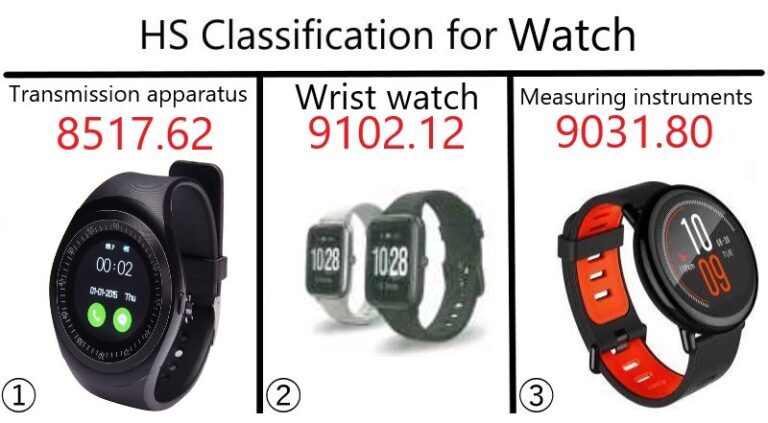
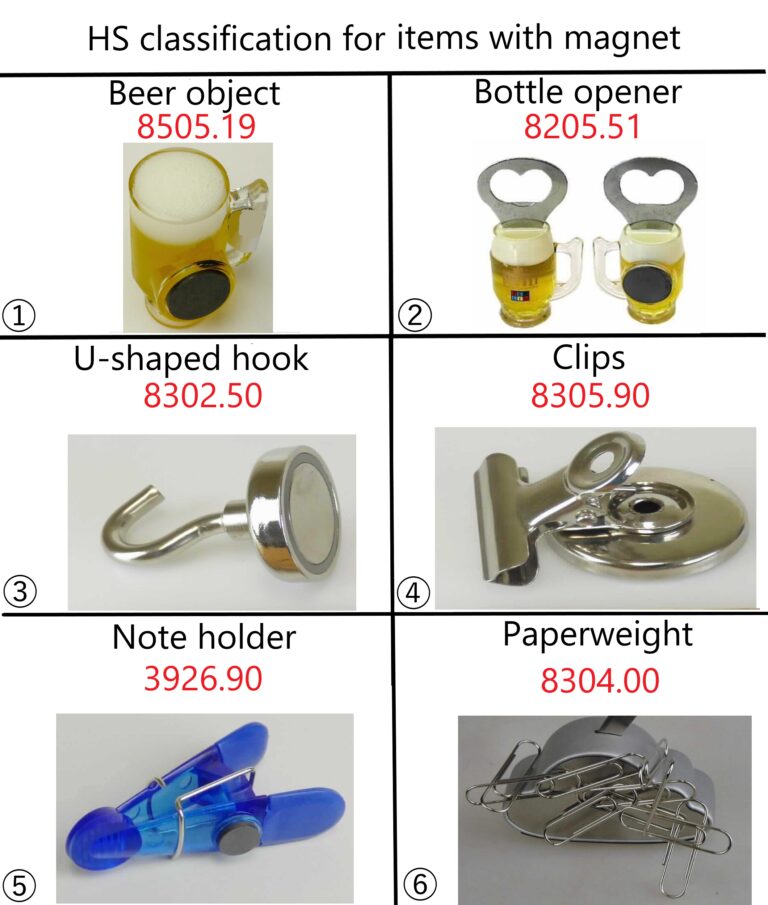
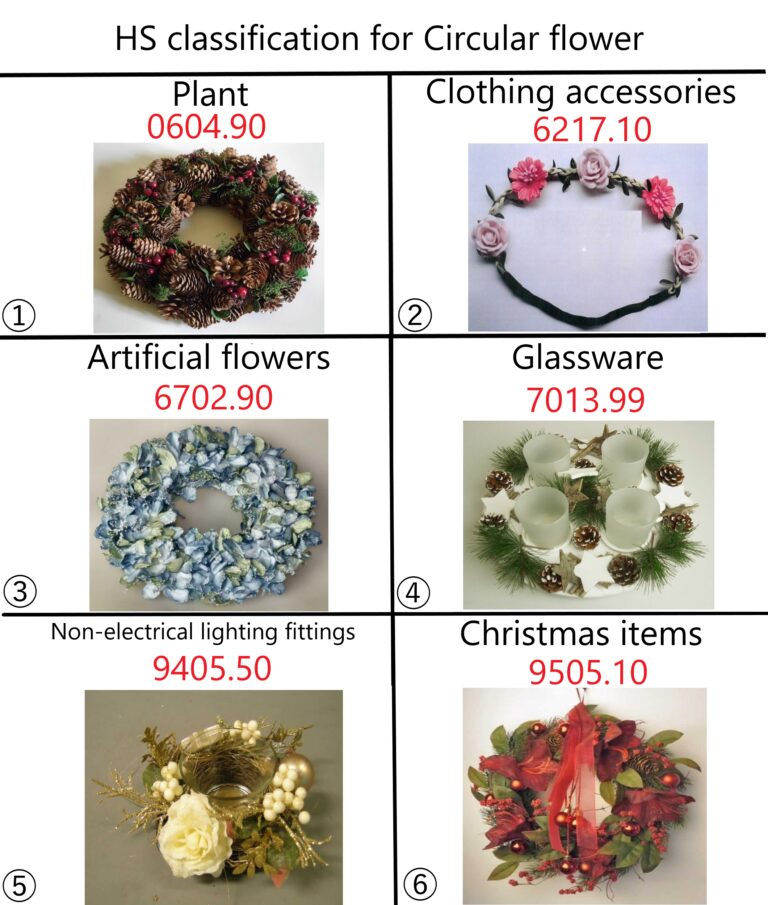
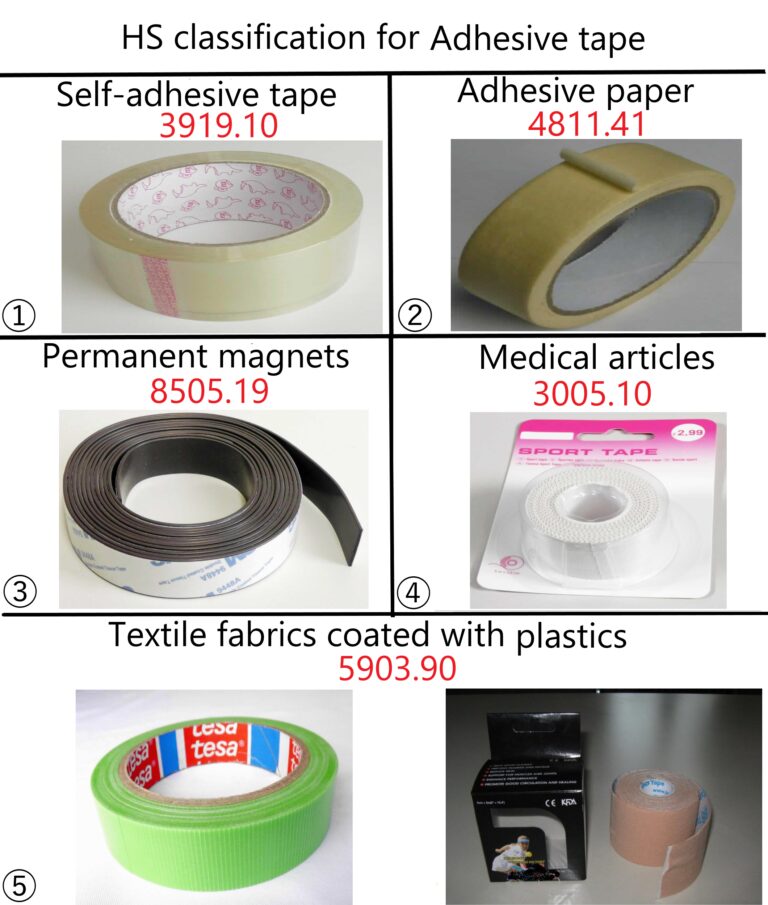
Invest in this book and begin your journey to a successful career
The database consists of 45 countries Customs HS classification decisions containing 1,000,000 records.
Many records include images and comprehensive details, backed by authoritative decisions.
Simply enter the keyword for the item you’re targeting and select a similar item’s record to ascertain the HS code.
This method enables you to efficiently find the correct HS code.
Without it, would you resort to spending your entire day perusing the Tariff-related documents all day long?
The E-book format is a PDF file.
After the payment procedure, you will be able to read it immediately.
No software is required.
You can search for it by the internet browser.
No additional fee is required.
You can search for it for free.
The INVOICE will be automatically sent to the email address used at the time of purchase.
Rest assured that your purchase information will not be disclosed to any third party.
